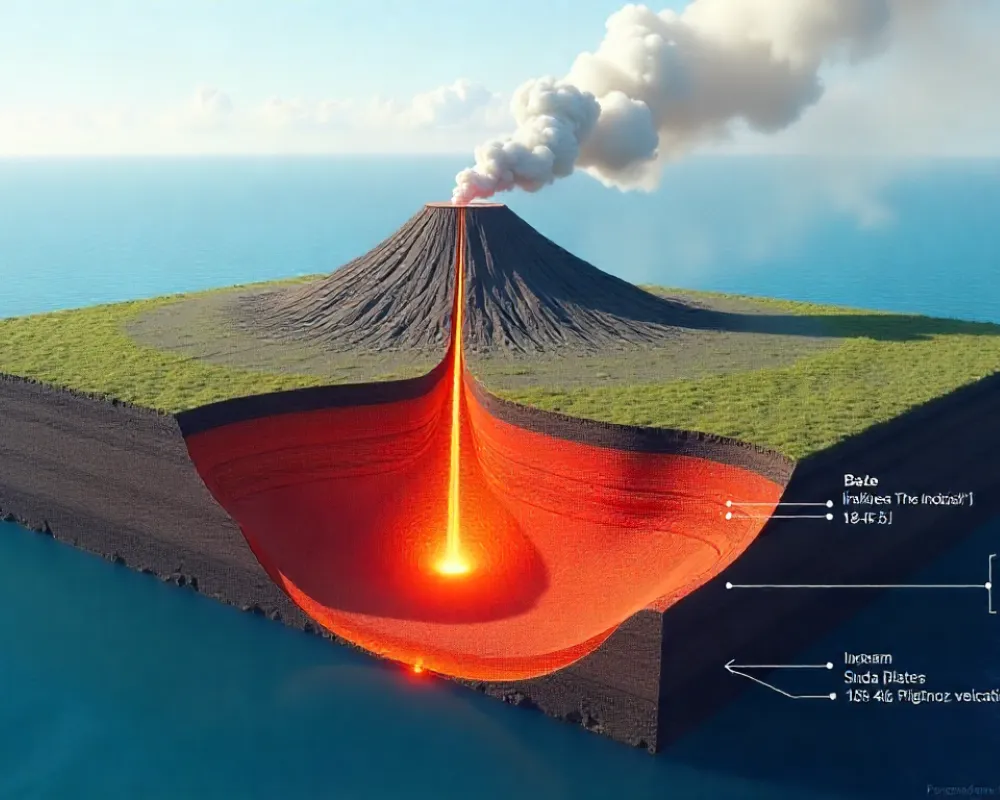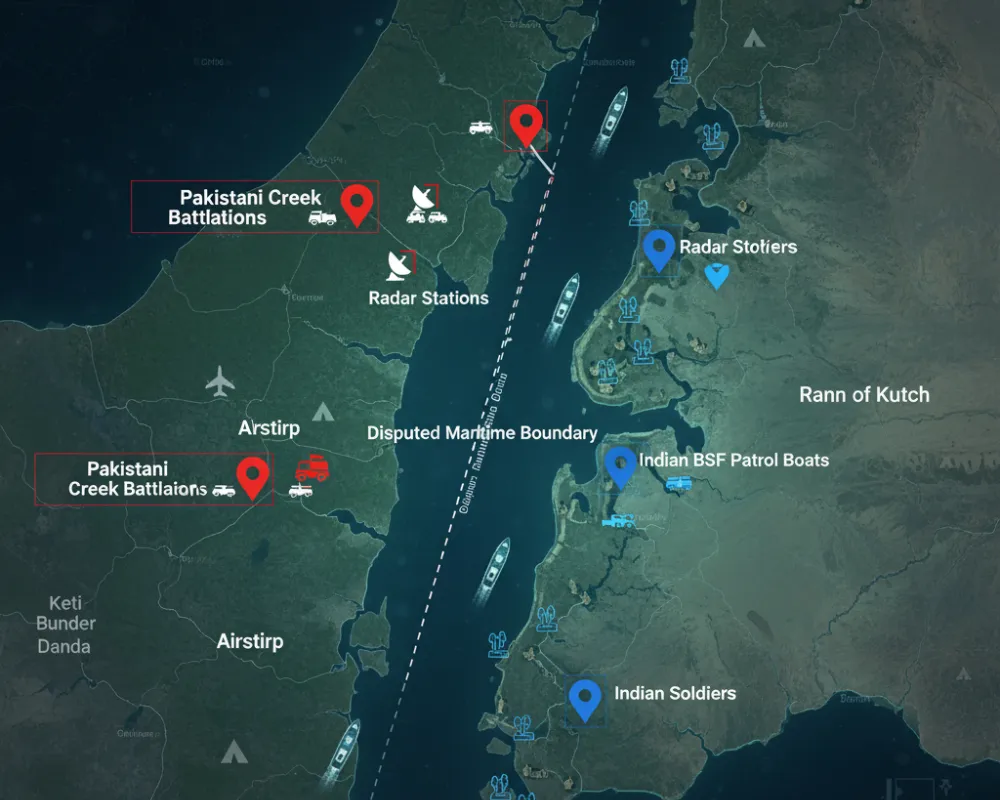Key Facts
- India’s only active volcano, Barren Island, erupted twice in September 2025 – on September 13 and September 20.
- Officials confirmed the activity on September 23, 2025.
- The volcanic island lies 138–140 km northeast of Port Blair, Andaman Sea, and is South Asia’s sole active volcano.
- The September 20 eruption was triggered by a magnitude 4.2 earthquake two days earlier, according to O P Mishra, Director, National Centre for Seismology (NCS).
- Indian Navy patrol footage captured lava and smoke spewing from the crater.
- Both eruptions were minor and posed no immediate threat to human settlements.
Geological Context
Barren Island covers about 3–8 sq km and rises 354 m above sea level. It sits at the junction of the Indian and Burmese plates within a subduction complex, where frequent seismic activity fuels volcanism.
Mishra explained: “The Andaman-Nicobar Island lies in a subduction zone where the Indian plate sinks below the Sunda Plate. Continuous earthquakes in the area can disturb the magma chamber, causing eruptions.”
The volcano’s magma chamber lies 18–20 km deep. Moderate earthquakes can inject seismic energy that pushes magma upward through volcanic vents.
Historical Activity
- First recorded eruption: 1787.
- Dormant until 1991, when a six-month eruption damaged local fauna.
- Later eruptions: 1994–95, 2005–07 (linked to 2004 Indian Ocean earthquake), 2017, 2022, July 2025, and now September 2025.
- The 1991 eruption reduced bird diversity from 16 species to just 6, with the pied imperial pigeon dominating the island.
Mishra highlighted the episodic pattern: “Similar activity was seen in 1991, 2004, 2005, and now in 2025.”
Monitoring and Preparedness
- The NCS continues real-time monitoring with seismic and thermal detection systems.
- The September 18 quake (M4.2) was recorded at 12.27°N, 95.08°E in the Andaman Sea.
- The Andaman & Nicobar Administration maintains 22 GPS observatories, seismic networks, early warning systems, and disaster response protocols.
- Satellite thermal monitoring (Smithsonian/USGS) flagged strong activity in April 2023, with intermittent ash plumes reported until July 2025.
Environmental and Scientific Impact
- Eruptions are typically Strombolian to Vulcanian, producing ash plumes and lava flows.
- Due to its uninhabited and harsh volcanic terrain, environmental impact is limited.
- Fishermen and tourists occasionally approach the waters, but the nearest inhabited islands (Swaraj Dweep & Narcondam) are >140 km away.
- The volcano provides valuable insights into plate tectonics, oceanic crust evolution, and earthquake–volcano interactions in the Indian Ocean.
Regional & Strategic Significance
- Barren Island is the only active subaerial volcano between Sumatra and Myanmar.
- Narcondam, its dormant companion, adds to the geological uniqueness.
- Its position near the West Andaman Fault, linked to the 2004 tsunami, highlights regional risk.
- The Indian Navy’s surveillance not only ensures maritime security but also aids in scientific observation of remote hazards.
Officials stress the importance of continuous monitoring as the Indian Ocean tectonic system remains highly dynamic, reinforcing the need for regional scientific cooperation.







Leave a Reply